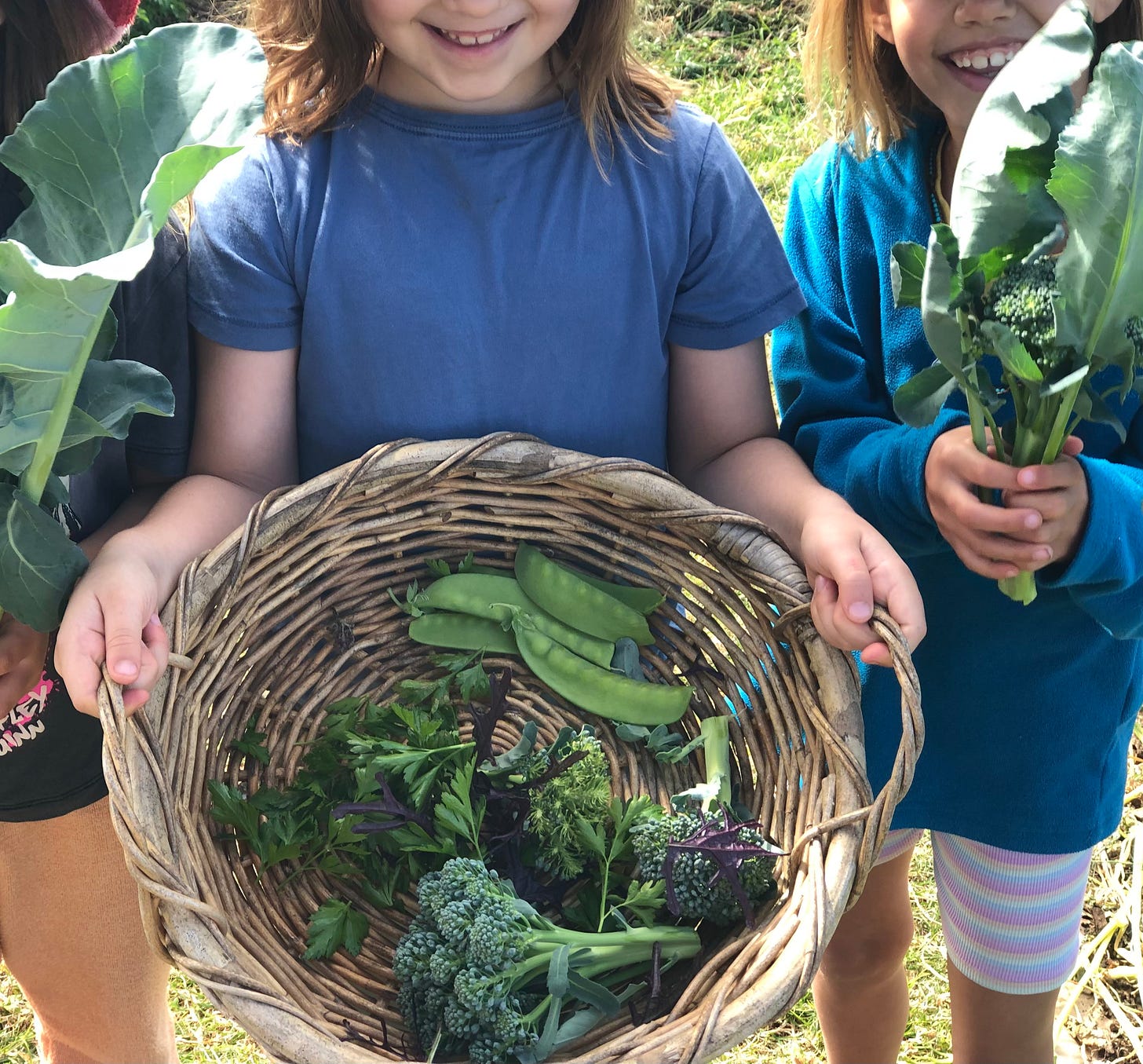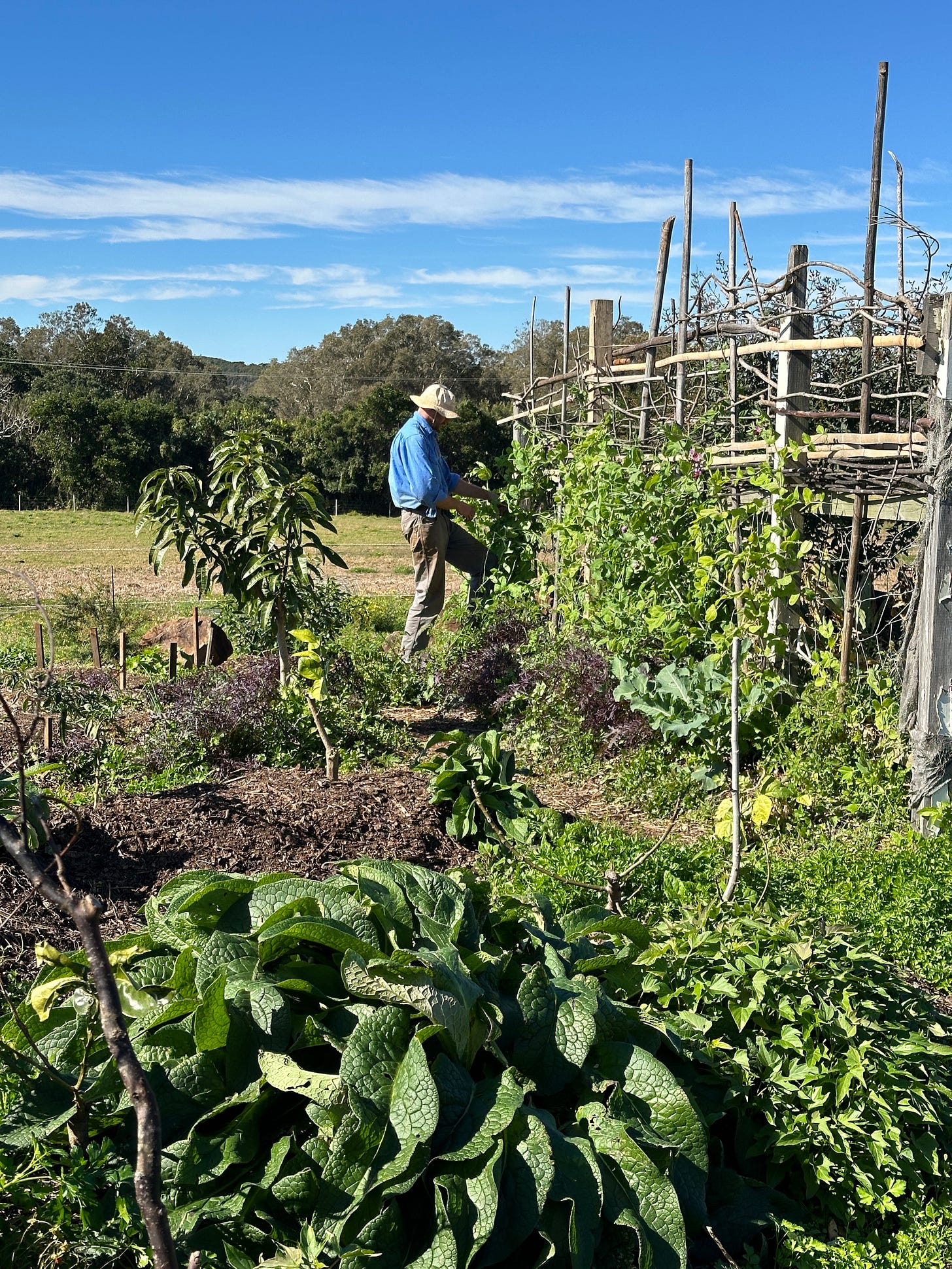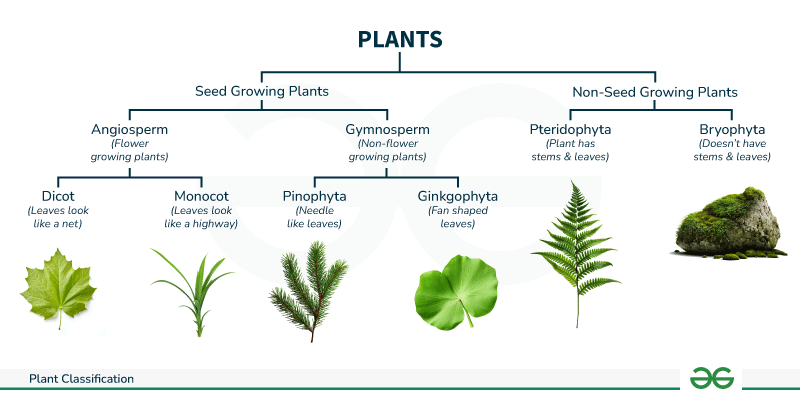Civilisation evolves and Garden responds
It's not just humans who are benefiting from our garden, so how do we preserve what we've produced?
AIDAN - Growing in The Garden
There is a rat living in the garden. It enjoys a diverse diet, beginning the feast with an antipasti of seasonal leaves and cherry tomatoes before moving on to a main course of broccoli and sweet potato. The rat has an intuitive sense of where the sweet potatoes are located and often it will find them before me. Maybe it helps having your nose so close to the ground.
Cauliflowers with a shorter stem are eaten while the longer purple-stemmed cauliflower isn’t touched. I may have to grow taller ones to escape the rat’s reach.
It has been two years since we turned a paddock into a food-producing garden. It is remarkable how much the stonefruit trees have grown. When you start by planting baby trees and wait years, the first sign of flowers, heralding fruit, feels like a blessing. We have since enjoyed passionfruit, strawberries and peaches. Now the trunks are too wide to get both hands around. I’ve accepted losses to the rat - up until now - because they were such a small percentage of what’s being grown. But about 50% of the broccoli leaves and flowers have been taken. Half his luck!
But it isn’t just the rat keeping our produce at bay. Extreme winds and heat, and occasional chomps from opportunistic cows have kept some of the other fruit trees small. This has made them more susceptible to disease and other pests.
I've tried to be patient and most of the trees have now come of age and it’s marvellous to behold (and smell). I am reading about the presence of birds of prey deterring rodents and considering if I can coax them to this garden at the top of the hill.
When there is a balanced mix of plants growing together, it can make for a more resilient garden. If you are growing fields of only broccoli, the bugs that enjoy eating broccoli will cheer, gorge and multiply. If the broccoli is surrounded by something smelly like nasturtium or garlic, pests can be deterred. Growing small patches of broccoli can also help, so that if one patch is attacked, the others are less likely to be affected.
“I saw a million lady bugs, “ said one child. “That means there are aphids,” said another.
The kids have picked up a lot over this past term. They know where there is food there are creatures who, like us, seek to benefit. The challenge is always balance.
Everything adapts! Including us.
Tiff - Cooking in The Garden
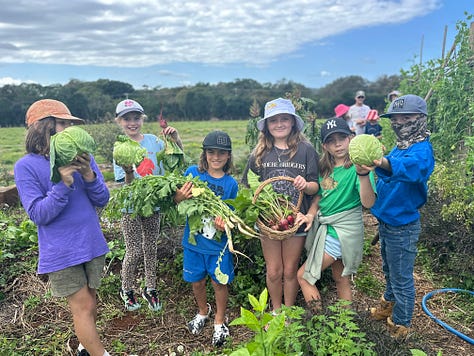
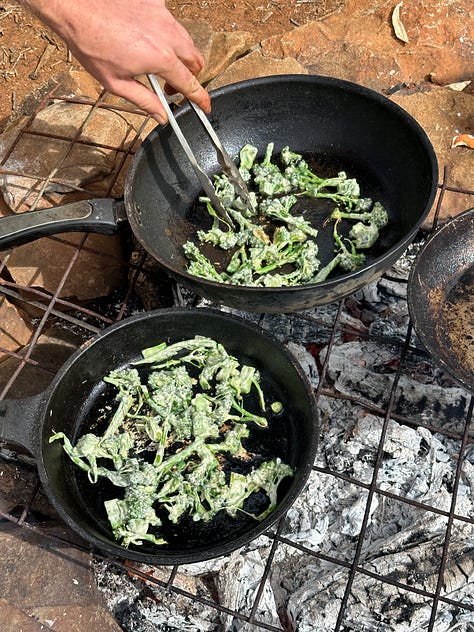
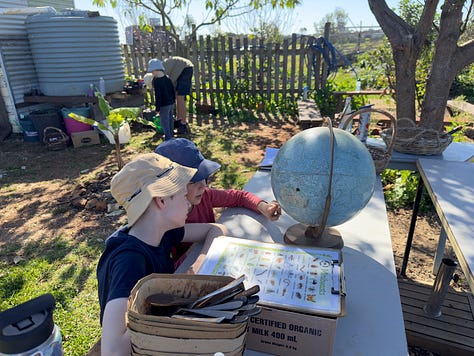
Winter at Living School coincides with the theme of Civilisation, so I decided to bring an old globe of the world into The Garden. What better way to illustrate how our growing microcosm in the LSKG is a blueprint for the Earth’s wisdom and how all things are connected.
With every year group we begin the lesson with an acknowledgment of all the plants and creatures in this outdoor classroom (including ourselves):
“Good morning Sun, good morning Soil, good morning EVERYONE”..
From the start, we are on equal plane with all the living beings here. We followed with our ‘give’ (feeding the plants and soil) before we ‘take’ (harvest and cook) approach inspired by ancient cultures.
The Year Fours collected leaves to observe the great diversity of shapes and patterns among the plants. Any feature zoned in on in the Garden can reveal worlds upon worlds, even leaves! We start thinking about the different plants and how some are very old like moss, ferns and bromeliads, which were alive since dinosaur time (pineapples being part of this family).
*When you are in Year Six this pineapple stalk will have a fruit ready to eat,” says Tiff.
Pineapples can take years to produce fruit compared to the younger plants (Angiosperms) like apples, oranges strawberries that, thanks to insects and other pollinators, have evolved flowers bearing fruits in a couple weeks or months.
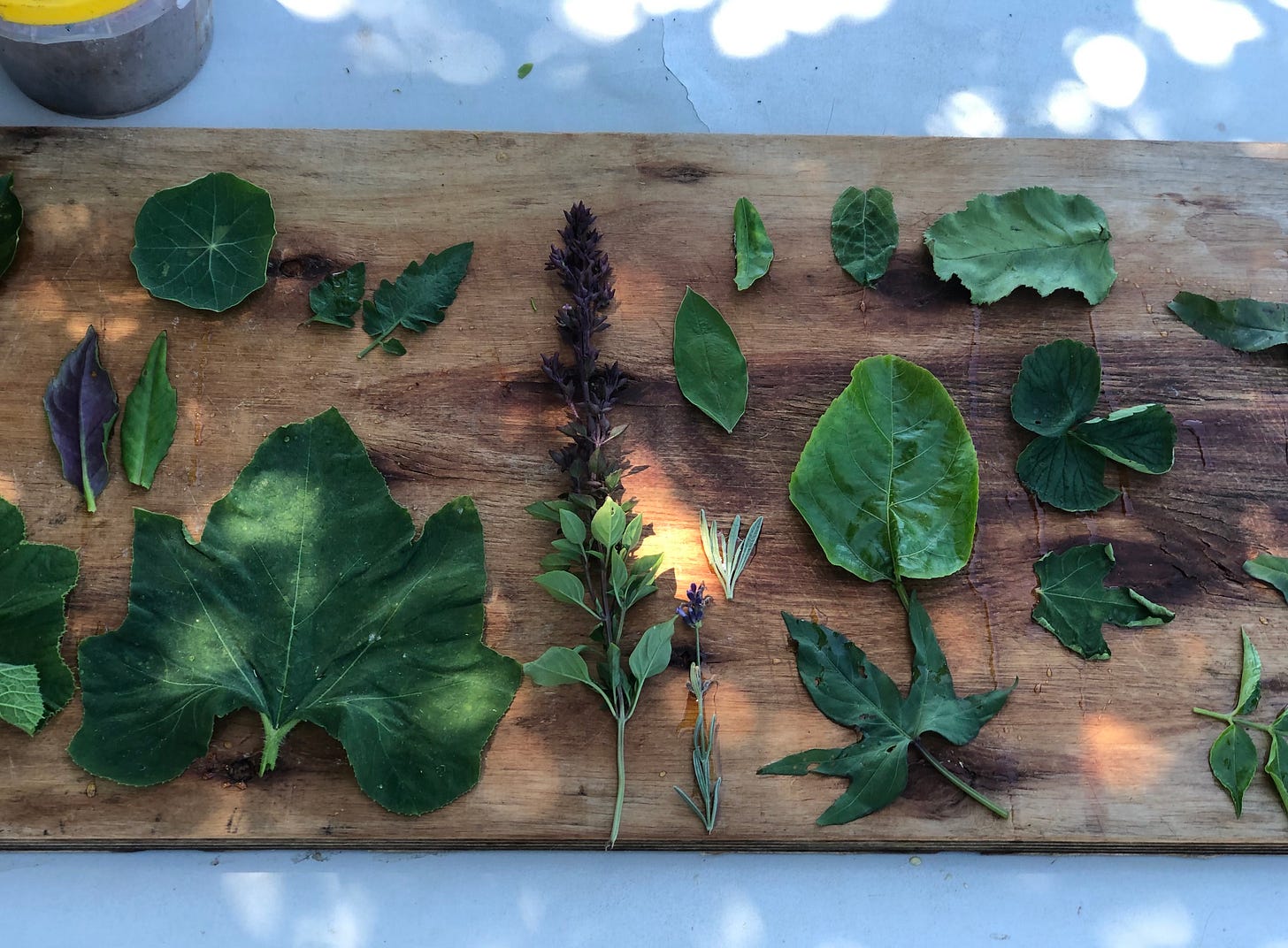
We admired sweet purple snow pea flowers while nibbling on spicy purple mizuna. Yellow calendula, pink peach blossoms, orange nasturtium, blue cornflower and borage flowers, and the great rainbow silverbeet have all brought The Garden alive.
We cycled manure and tucked the beds in with mulch and learned that nutrients like potassium from banana peels “help to break down the soil and make citrus trees happy”.
We then planted baby broccoli to create new bouquets of flavour and revisited the potatoes we planted last term, which were now poking out their new green tops.
We didn’t get a change to cook up broccoli this year but last winter, The Year Ones had their first garden cook up!
After going on a treasure hunt for the 5 humble heads of broccoli and herbs (for the sauce), we got straight into building the fire and making the batter for the broccoli nibbles. It is a lovely practice to harvest food, then cook on a fire, connecting us back to our 10, 000 yr old ancestral roots. These two discoveries (farming and fire) gave rise to the rest of civilisation as we know it. It is lovely to return to these two practices week after week since these are two of the most fundamental practices that make us human.
Broccoli battered nibbles lightly cooked over a fire, with a garden yogurt dipping sauce, served on a nasturtium plate -“best thing I’ve ever eaten” (Edie) - says it all!
Next came the lesson in sauerkraut, the origins of which began in the Orient. This food combination can be traced back to the labourers on The Great Wall of China, who had to live off fermented cabbage and rice for months on end.
We searched out our plump cabbages in the garden, as well as some juicy beetroots. We then pounded the vibrant greens and reds together in bowls. The students salted and massaged the kraut-to-be and squished the bounty into jars previously plunked in boiled water on the fire. A cabbage leaf ‘sealed’ the jar to let it breathe while the lactic acid bacteria would start to colonise and ferment the cabbage.
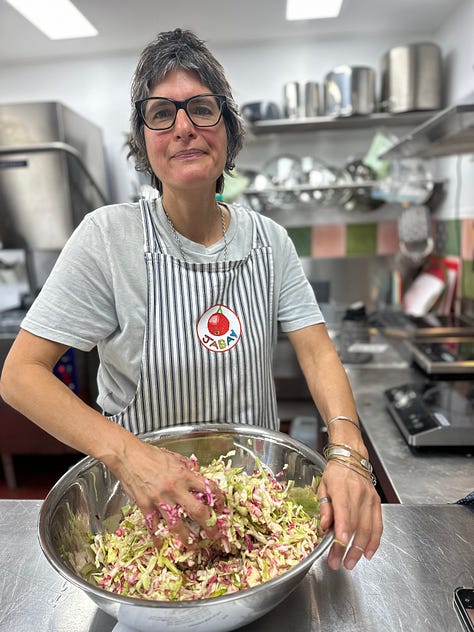
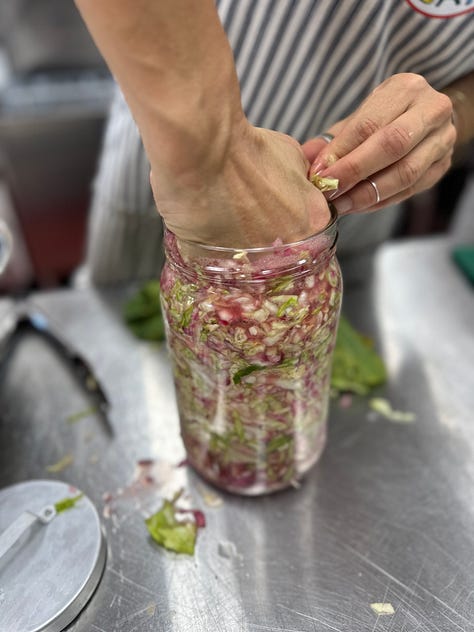
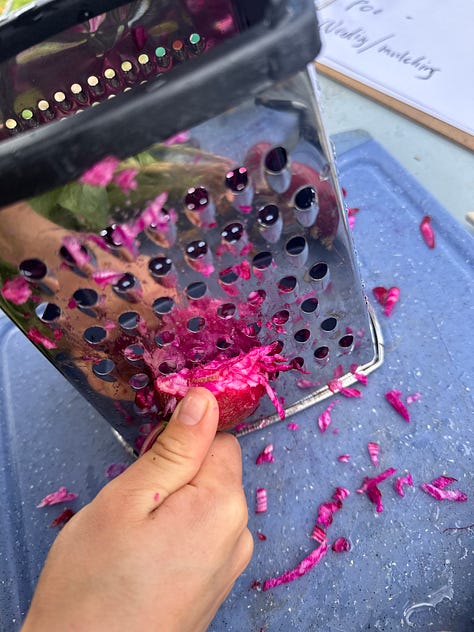
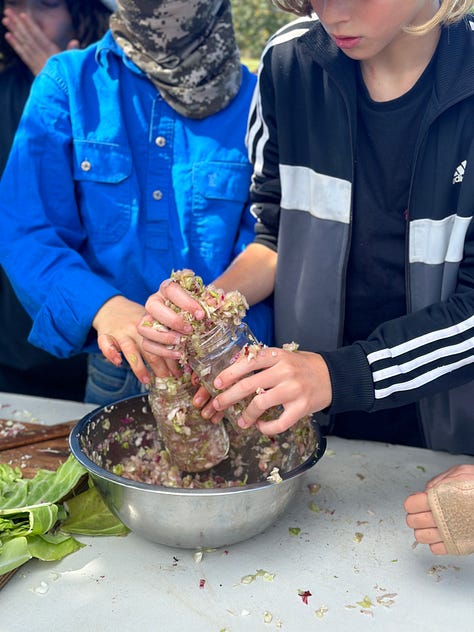
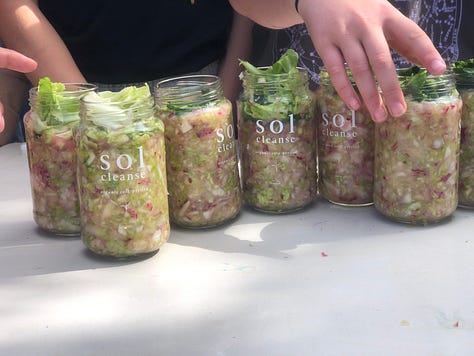
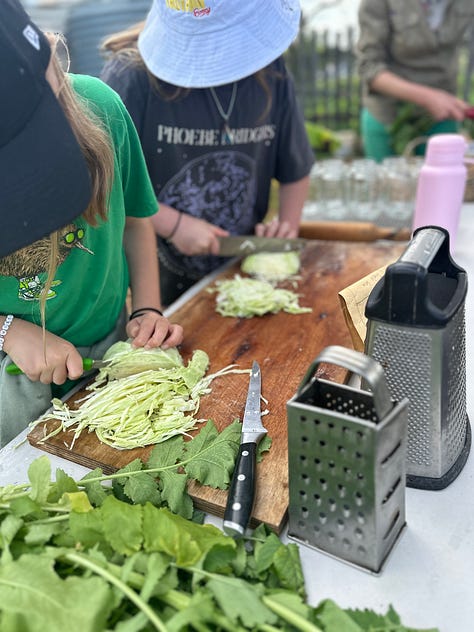
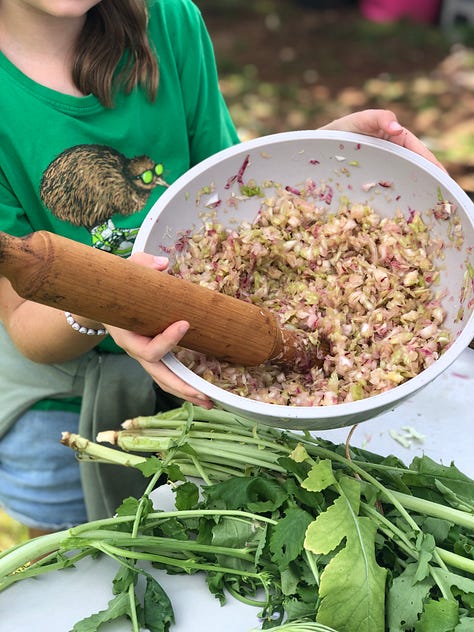
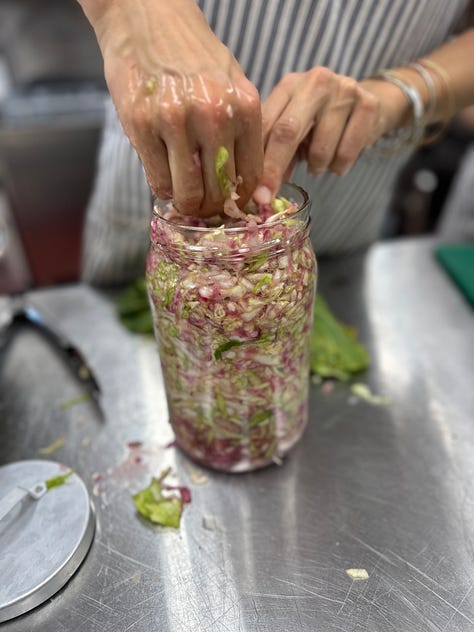
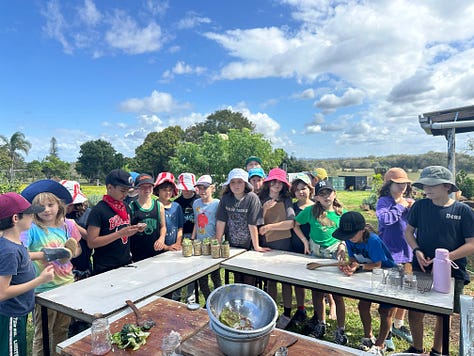
In The Living School Kitchen (Jabay) with Anna
Did you know that eating fermented foods like sauerkraut with your meal helps you digest and absorb the nutrients from your proteins? So with all the cabbages, beets and daikon coming from The Garden, Hot Dogs became the logical choice for the menu this term.
So has food that boosts the immune system. As the winter blows in we say goodbye to the last of the passionfuit. They’ve been the stars of the show for a while now but with so much illness in the school community their antioxidant properties could not be more welcome.
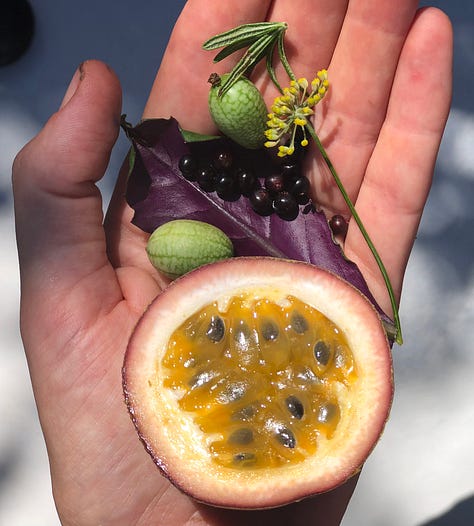
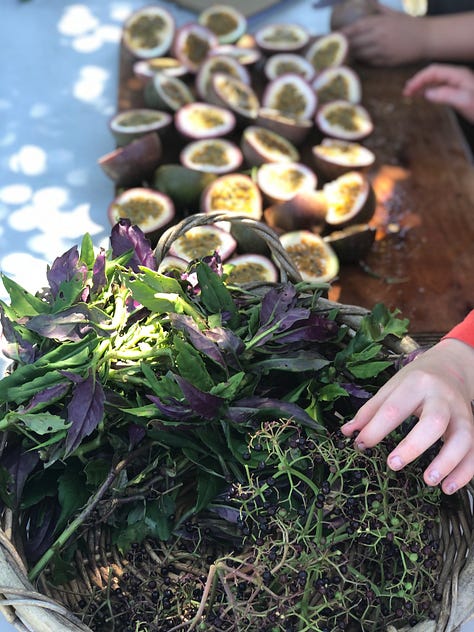
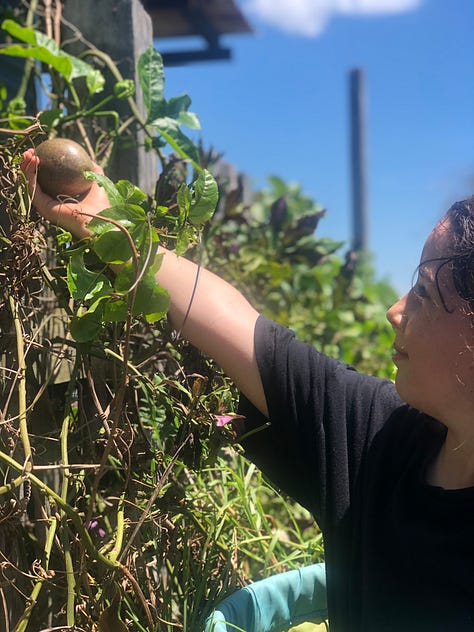
Passionfruit is a great source of Vitamin A & C, polyphenols & carotenoids. It is high in fiber and has a low glycemic index - great for keeping blood sugar levels low.
Not only have we used them to make a delicious coulis in the fruit cups they’ve made for great passionfruit & coconut milk gummies, passionfruit jam, muffins and bliss balls.
Speaking of the immune system, we’ve also been brewing up big from The Garden produce in Jabay this term.
Our house-made organic chicken bone broth has been reduced from veggie scraps, turmeric, ginger, garlic, lemon myrtle and other herbs cooked down with apple cider vinegar & sea salt.
We even made an immune-boosting tincture made up of ginger, turmeric & black pepper mixed with local honey. The syrup is then diluted with warm water and the juice of a bush lemon to make a cold & flu fighting tonic and the base for an immune-boosting turmeric latte at the coffee cart.
It feels good to be able to feed the community at Living School with recipes and ingredients that have stood the test of time.
Sometimes it’s worth looking back at Civilisation to go forwards.



